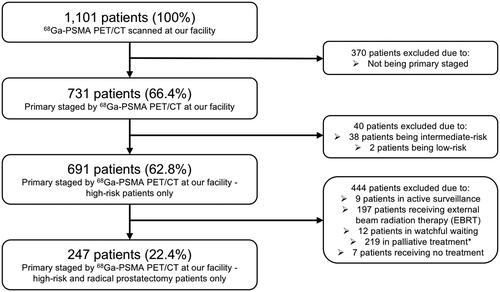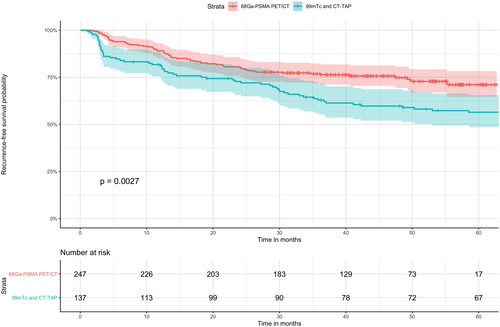Figures & data
Figure 1. Flow chart of inclusion of high-risk prostate cancer patients treated by radical prostatectomy in the study. *Refers to treatment with antiandrogens, surgical or chemical castration therapy, 223Radium, and early or late chemotherapy (most commonly Docetaxel or Cabazitaxel).

Table 1. Characteristics of radical prostatectomy (RP) specimens in the 68Ga-PSMA PET/CT cohort and in the 99mTc bone scintigraphy and CT-TAP cohort.
Table 2. Baseline and clinicopathological characteristics of the 68Ga-PSMA PET/CT cohort and the 99mTc bone scintigraphy and CT-TAP cohort.
Figure 2. 68Ga-PSMA PET/CT compared with conventional imaging in relation to recurrence-free survival (RFS) in Kaplan-Meier curve analysis with 0.95 CI. Primary staging with 68Ga-PSMA PET/CT was significantly associated with a longer 5-year RFS rate compared with conventional imaging. The median duration of follow-up was 45.5 months in the 68Ga-PSMA PET/CT cohort and 100.3 months in the 99mTc bone scintigraphy and CT-TAP (thorax, abdomen, pelvis) group. The follow-up data of the conventional imaging cohort is censored at 60 months due to much longer follow-up time compared with the 68Ga-PSMA PET/CT cohort to improve visualization.

Data availability statement
Most data supporting the reported results are provided in the paper and further data are stored by the authors.
